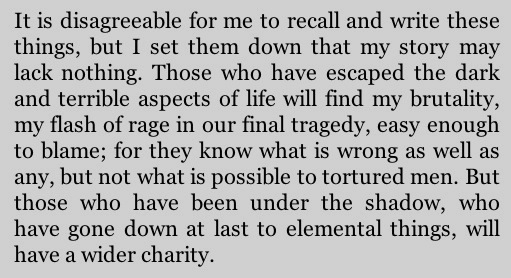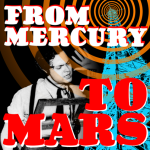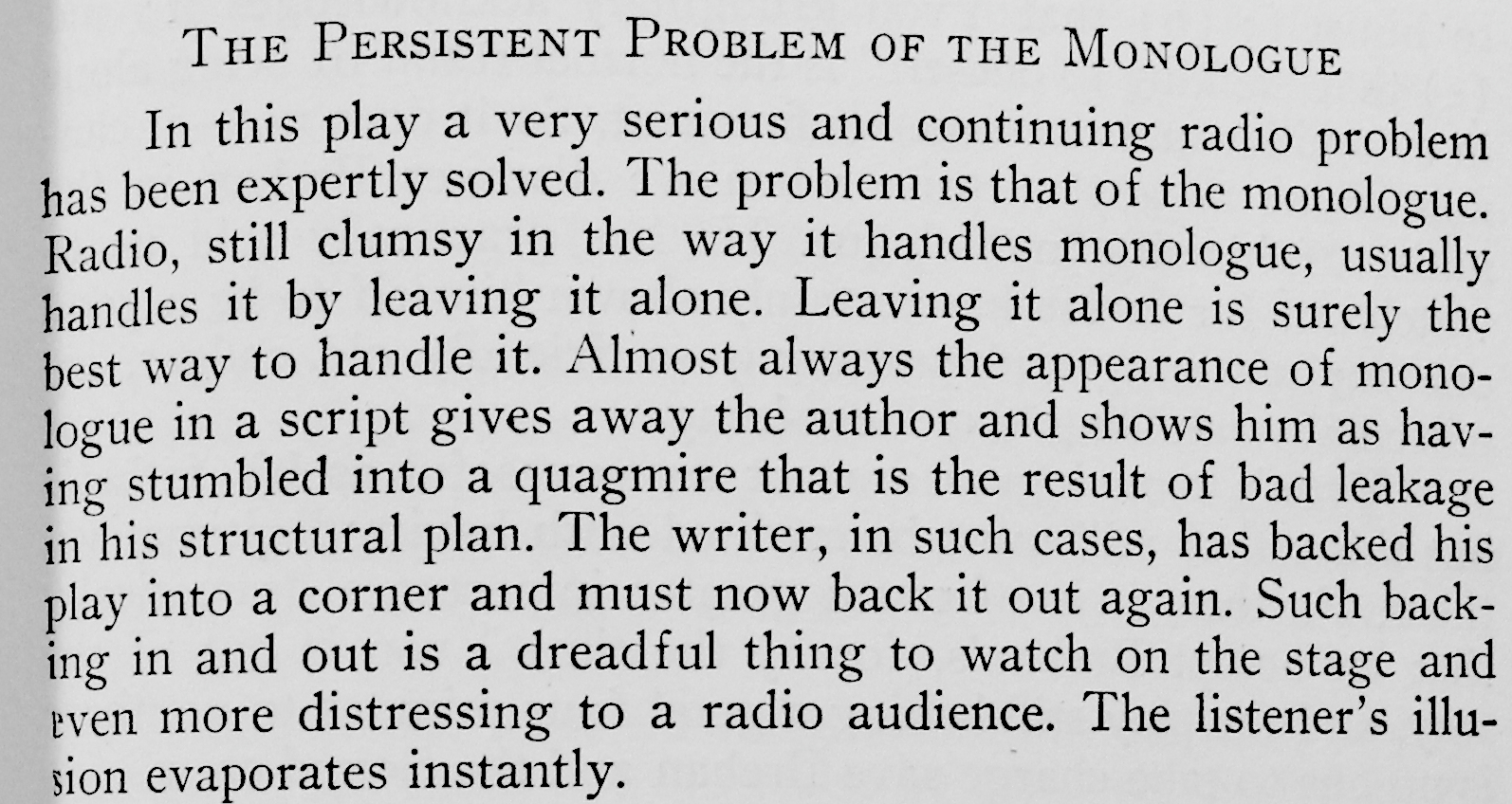From Mercury to Mars: A Hard Act to Follow: War of the Worlds and the Challenges of Literary Adaptation
What is left to tell after the end of the world, and who is there to tell it? In his Mercury Theater signoff on October 30, 1938, producer and star Orson Welles boasted that the evening’s “War of the Worlds” broadcast had “annihilated the world before your very ears and utterly destroyed the C.B.S.” While these scenes of otherworldly invasion from the program’s opening 40-minute act have been a source of much discussion, its 20-minute closing act is seldom addressed and stands in stark contrast to the fast action and stylistic innovation of Act I. Featuring Welles as Professor Pierson reading diary accounts of his travels through the ruins of New Jersey and Manhattan, Act II consists of two long stretches of voiceover narration, broken up by a short dialogue scene between Pierson and a passing stranger. While faithful to H. G. Wells’s 1898 book, this act’s reliance on monologue violated norms of 1930s radio production, which dismissed the technique as a regressive print convention unsuited for radio. However, WOTW’s own use of the technique was no mere technical error, but instead spoke to much broader shifts in the aesthetics of Golden Age radio drama, whose budding crop of auteur producers sought to challenge existing norms and cultivate more self-consciously “literary” styles of narration.

Narration in H. G. Wells’s novel framed as an act of writing.
Professor Pierson in the radio version reads from his diary.
While not without their advantages, literary adaptations presented numerous technical challenges that formed the subject of extensive discussion in early production literature. Serving as presold properties and ready programming fodder, adaptations had the added advantage of lending prestige to sustaining shows such as Mercury, directly aiding its bid for commercial sponsorship as the rebranded Campbell Playhouse scarcely a month after WOTW’s airdate. However, the technical challenges of literary adaptation were often daunting. Early writers were warned to approach literary content with caution, as most conventions of print narration were wholly unsuited for broadcast purposes. NBC’s Assistant Continuity Director Katharine Seymour, for instance, in her 1931 manual, How to Write for Radio, noted that “in adapting printed fiction to radio, a complete transformation must be brought about,” since “there will be no fine descriptive passages to relieve . . . a hackneyed plot” or “make up for the lack of action.” CBS Continuity Director Max Wylie, in his 1939 Radio Writing, argued that “[no] piece of literature . . . cannot, somehow, be creditably transmitted to the radio audience,” but concurred that some posed serious problems. In particular, he noted, was “the problem of the one-man story” that “takes place substantially within a man’s mind and which we experience by being taken to this mind. Here is the radio problem . . . to whom is the man going to talk?”
“The last man left alive” – excerpt from H. G. Wells novel.
While monologue might seem the obvious choice, Wylie noted that, “radio, still clumsy in the way it handles monologue, usually handles it by leaving it alone.” In fact, he added, “leaving it alone is surely the best way to handle it,” as its use almost always “gives away the author and shows him as having stumbled into a quagmire that is the result of bad leakage in his structural plan.”
The WOTW script was among several tasked to Howard Koch, who recalled receiving his assignment with a copy of Wells’s book and “instructions . . . to dramatize it in the form of news bulletins,” then working tirelessly with coproducers Welles and John Houseman to refine this technique in advance of the broadcast. Dominating Act I, these news reports rely more heavily on verbal description than is often recognized, but frequent handoffs between characters and extensive action within each scene still readily satisfy Seymour and Wylie’s criteria for successful literary adaptation. Following the collapse of the nation’s radio infrastructure and extermination of the local populace at the end of the act, however, Wylie’s question returns: who is there to talk to, and how to avoid the embarrassment of unmitigated character monologue? How, in other words, to save radio from lapsing into print?
- Excerpt from Act I: Long descriptive passages by commentator Carl Phillips are mitigated by dramatic action and periodic cuts to the studio announcer.
- Excerpt from Act II: Long stretches of descriptive narration by Professor Pierson with minimal action and no additional voices.
If the reversion to novelistic conventions in WOTW from this perspective seems problematic, an alternative aesthetic trajectory may also be drawn that lets us see monologue as not merely a matter of poor craftsmanship, but rather as a contested category in larger struggles to renegotiate dominant production norms. As Neil Verma notes in his work on the aesthetics of Golden Age radio, a burgeoning group of auteur dramatists during the late 1930s and 1940s sought to stake their claim in radio and explore new storytelling possibilities for their medium. Less interested in policing boundaries between print and broadcasting than their forebears, many of these producers brought a distinctly literary sensibility to their work and pressed discarded techniques such as monologue into prominent use – from lengthy speeches in poetic verse for Archibald MacLeish’s “Fall of the City,” to Norman Corwin’s one-man play, “Soliloquy to Balance the Budget,” to more popular examples such as Arch Oboler’s Lights Out:
- The Dead Woman speaks in Archibald MacLeish’s “Fall of the of the City” (Columbia Workshop, April 11, 1937)
- House Jameson as the Soliloquist in Norman Corwin’s “Soliloquy to Balance the Budget” (Columbia Workshop: Twenty-Six by Corwin, June 15, 1941)
- A criminal flees an angry mob in Arch Oboler’s “Super Feature” (Lights Out, March 16, 1938)
Such techniques retained their vitality in popular postwar programming, as well, from Suspense, to Philip Marlowe, Dragnet, and Frontier Gentleman:
- Agnes Moorehead loses herself in the décor for Suspense’s dramatization of “Yellow Wallpaper” (July 29, 1948)
- Philip Marlowe gets a clue in Philip Marlowe, “Where There’s a Will” (October 17, 1948)
- Joe Friday closes narrative gaps for a Dragnet narcotics bust, “The Big Man” (January 12, 1950)
- Newspaperman J. B. Kendall fights rough in Frontier Gentleman’s “Charlie Meeker” episode (February 9, 1958)
As these examples illustrate, use of monologue quickly spread from a small cadre of experimental producers to a wide range of programming genres, moving in the process from a much-maligned embarrassment to an accepted and valued tool of radio narration.
Understanding the neglected second act of WOTW demands an appreciation of its problematic nature for a production culture that positioned character monologue as an embarrassing reminder of the medium’s continued struggles for autonomy and aesthetic legitimation. However, this production culture was itself significantly destabilized at the dawn of radio’s Golden Age, with its privileged norms actively contested by new writers and directors who sought to build their names and make their mark in the medium. At the end of the world, then, we perhaps find the beginning of new and larger story in the history of radio drama – one whose full telling will demand close attention to shifting styles and the production contexts in which they developed.
 This is the sixth post in our ongoing series in partnership with Sounding Out!, From Mercury to Mars: Orson Welles on Radio after 75 Years. Stay tuned for the #WOTW75 collective listening experiment on October 30th that will commemorate the 75th anniversary of the original “War of the Worlds” broadcast.
This is the sixth post in our ongoing series in partnership with Sounding Out!, From Mercury to Mars: Orson Welles on Radio after 75 Years. Stay tuned for the #WOTW75 collective listening experiment on October 30th that will commemorate the 75th anniversary of the original “War of the Worlds” broadcast.
Miss any of the previous posts in the series? Click here for links to all of the earlier entries.




